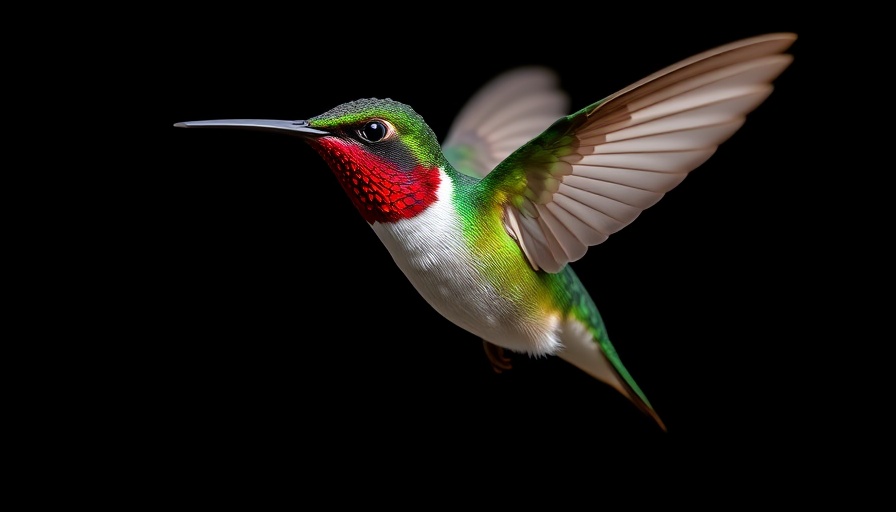
Discovering the Ruby-throated Hummingbird: An Eastern Gem
Spring brings with it the vibrant presence of the Ruby-throated Hummingbird, a tiny marvel and the only hummingbird species known to nest in the Eastern United States. As winter wanes, these remarkable birds migrate from Central America, with some males arriving as early as March to claim their territories. By late April, they grace Northeastern gardens with their acrobatic displays and iridescent plumage, enchanting those lucky enough to catch a glimpse.
Springtime Migration: A Journey of Resilience
The return of the Ruby-throated Hummingbird signifies more than just a seasonal change; it represents resilience and adaptability. After a long migration, these birds perform elaborate aerial dances to attract females, showcasing their strength and agility. Their ability to adapt and thrive amidst changing environments demonstrates the challenges faced by migratory birds globally, raising awareness about their ecological importance.
Attracting Hummingbirds: A Colorful Yard Awaits
If you're eager to enjoy the company of Ruby-throated Hummingbirds, setting up a feeder is an excellent way to invite them into your garden. Hummingbirds are particularly drawn to bright colors, especially red. Consider wearing a red hat as you sit outside or painting your bird feeder in vibrant hues. Additionally, planting scarlet flowers will create a welcoming environment that enhances your backyard's biodiversity.
Right Timing: When to Look Out for These Fascinating Birds
Knowing when to expect Ruby-throated Hummingbirds in your area is crucial for birdwatching enthusiasts. Males typically lead the charge, arriving and staking their spots first, followed by females a few weeks later. By being mindful of their arrival times, nature lovers can maximize their chances of witnessing these remarkable birds as they flit between flowers and feeders, making every spring a celebration of life’s renewal.
The Joy of Birdwatching: Connection to Nature
Watching Ruby-throated Hummingbirds can be an exhilarating experience, fostering a deeper connection to nature. These birds are not just a springtime attraction; they serve as vital pollinators for many plants. Engaging with them through birdwatching can ignite a passion for conservation and the importance of protecting their habitats.
So, as the weather warms and these dazzling creatures return to our gardens, let’s cherish each moment of their visit. Prepare your feeders, sit back, and enjoy the ballet of nature right outside your window.
 Add Row
Add Row  Add
Add 




Write A Comment